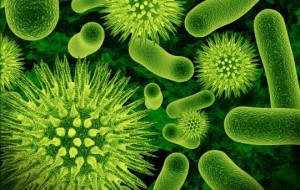Hidden Tillers of the Soil

Soil is very much a living substance –it’s either breaking up or building up. Millions of micro-organisms and other life-forms that live in or on the soil are the main agents of this continuous change. Without these micro-organisms – many of which are microscopic and beyond the vision of the naked eye – dead organic matter would pile high on Earth’s surface, and the soil would suffocate.
Soil structure is subject to a raft of influences related to soil type and all aspects of its chemical, physical and biological make-up. But these tiny critters are most influential factor. Their work is crucial because soil structure is directly linked to soil erosion, water intake and crop growth. A compact soil has a low infiltration rate. Whereas a stable, granulated soil allows rapid water intake, drainage, aeration and beneficial microbial activity. Crops grown in such soil respond well to favourable moisture, fertility and cultural practices.
Micro-organisms eat organic matter such as grass clippings, fallen plant leaves, and algae. In doing so, they reduce dead organic matter on Earth’s surface and release nutrients from the decomposing organic matter for living plants to use.
Some of them burrow and channel through soil, improving soil structure and aggregation in the process; while others have the ability to break down resistant organic matter such as lignin, toxins, and pesticides.
During the decomposition of plant and animal remains, micro-organisms produce many organic compounds and release organic substances that influence the stability of soil units. However, the ability of micro-organisms to stabilise soil varies greatly.
Some of the compounds that are produced and released have a tremendous effect on stability; others have little or no effect. Some of the natural products produced by micro-organisms are more effective per unit of weight than synthetic stabilisers.
The soil fauna is an important factor too. For example, earthworm can secrete slimes that render the cast several times more stable than the original soil. Under some mulching regimes, huge quantities of worm casts can be produced and deposited on the soil surface.
Micro-organisms also have the ability to protect plants from antagonistic pathogens, and some can dissolve minerals, making nutrients available to plants.
Earthworms are like “Nature’s tillers”. They incorporate dead organic matter into soil, ingest it, and excrete the nutrient rich casts in to the soil. They improve aeration, water infiltration, drainage, and enhance nutrient availability and cycling.
Fungi are able to break down resistant materials such as cellulose, gums, and lignin. They dominate in acidic, sandy soils and in fresh organic matter. Plants roots and the mycelia (vegetative parts) of some fungi tend to push primary particles closer together to form aggregates or structural units in the soil. In other words, they help hold the soil together.
Earthworms, crayfish, ants and many insects also form aggregates, and, in many cases, may stabilise them. Some bacteria produce gums that have similar effects. Burrowing animals separate the soil mass into units. Actinomycetes can decompose resistant substances in soil. One type helps plants get nutrients from the air by breaking triple-bonded nitrogen down into ammonium that plants can use. Antibiotics are made from soil actinomycetes.
Bacteria decompose a wider range of earth material than any other microbe group. Heterotrophs gain their energy and carbon from other organisms, while autotrophs synthesise their own energy from light or by chemical oxidation. Some bacteria can fix nitrogen in to forms plants can use. Beyond the work of the micro-organisms, nature provides a number of examples of ways in which particles, crumbs, granules, lumps, clods and various aggregates are formed from the soil mass into the many-sized units found in the soil.
Changes in the charge of soil particles can account for the bringing together of very small (less than two microns) primary particles. However, this process is of limited importance in aggregation under natural conditions in the soil. When wet soil dries, the particles tend to come together as the attractive charges are brought closer together when water films between the particles are reduced. Drying can also cause unequal stresses that may break the soil into particles. Other physical forces, such as freezing and thawing, can also cause fragmentation on the soil mass into smaller units. While tillage, of course, breaks up the soil mass into various components.

